page=1/--
Frequently Asked Questions
Here we answer the most commonly-asked questions about ordering, chicken care, and more.
All about Salmonella disease
The word "Salmonella" evokes fear in the hearts of chicken-keepers. A healthy respect for this bacterium is certainly justified, but should not be blown out of proportion. The main concern is that Salmonella can be transferred to humans and can make us very sick, or in some cases even cause death. Thankfully, practicing good biosecurity and following the CDC's guidelines can keep humans safe. Unfortunately, though, the prognosis isn't so good for chickens that become infected with Salmonella. Read on to find out more. Salmonella (general) Various types of Salmonella infection include Pullorum, Typhoid, Paratyphoid, Arizonosis, Paracolon, various other names...
Read MoreAll about Perosis disease
Perosis is a nutritional deficiency that can cause swollen, twisted, broken, or bowed legs, or loss of color in feathers, the comb, or the roof of the mouth. Thankfully, nutritional deficiencies can be avoided by making sure your flock has free-choice access to complete, nutritionally-balanced feed. Don't just feed them scratch or kitchen scraps; that can cause problems for them later on! Read on to find out more: Perosis Also called Slipped tendon, chondrodystrophy Prevalence Uncommon in layers, common in heavy, fast growing chicken breeds used for meat production. Signs General signs Swollen hocks, one or both legs twisted to...
Read MoreAll about Polyneuritis disease
If one of your bird's neck muscles seems to have "frozen" in a position that leaves them staring at the sky, it's possible they have polyneuritis, or "star gazing" disease. This is caused by a thiamine deficiency that can usually be avoided by giving your flock free-choice access to complete, nutritionally-balanced feed. Don't just feed your flock scratch or kitchen scraps, as that can leave gaps in their nutrition. Read on to find out more. Polyneuritis Also called Star gazing, Thiamine deficiency Prevalence Uncommon, particularly so in backyard flocks with access to pasture. Signs General signs - Lack of appetite,...
Read MoreAll about Coccidiosis disease
Coccidiosis is very common in chicks, especially ones that may be stressed from shipping or from being introduced to a new location. You can help by keeping your chicks as stress-free as possible, and by keeping their brooder dry. Some people choose to use medicated feed to combat susceptibility to this disease while the chicks develop a resistance, while others use regular feed and have no trouble with cocci. We discuss medicated feed and more, below: Coccidiosis Also called Cocci Prevalence Very common Signs General signs - Loss of appetite, weight loss or stunted growth, ruffled feathers, lethargy, and (for...
Read MoreAll about Avian Encephalomyelitis disease
Avian encephalomyelitis (AE) is a neurological disease that causes symptoms that are similar to many other diseases. Some improper flock management practices (including incorrect use of supplements or nutritional deficiencies) can also lead to comparable symptoms, so you may need a veterinarian to provide a firm diagnosis. There is no treatment for the virus that causes AE, and while birds that recover do not continue to be lifelong carriers of the virus, their egg laying frequency will likely be diminished. There are steps you can take to reduce your flock's risk of spreading the disease among itself. Read on to...
Read MoreAll about Mycoplasma disease
Mycoplasma may exhibit mild symptoms in chickens, but once they have it, they can be carriers for life. While mycoplasma is deadly in turkeys, in chickens, it can reduce laying frequency in your flock and be passed from the mother hen to the chick in the egg. This is a reportable disease that really demands a veterinarian's expert diagnosis and treatment plan. Read on to find out more: Mycoplasmas Also called There are several mycoplasmas, which are variously known as Mycoplasma gallisepticum, Mycoplasma synoviae, MG, Chronic Respiratory Disease, Infectious sinusitis (in turkeys) Prevalence Common in large commercial laying or meat...
Read MoreAll about Coryza disease
Coryza is the chicken equivalent of the "common cold" - but interestingly enough, colds in humans are caused by viruses, while coryza is caused by a bacteria in chickens. Thankfully, this disease is rarely fatal, and chickens recover from it within a matter of weeks. But it can look like many other respiratory diseases, so you will want your vet to diagnose any ailing members of your flock to be sure you're treating them correctly. Read on for more information about this common chicken ailment: Coryza Also called Cold, Infectious Coryza, IC, Roup Prevalence Common Signs General signs - Loss...
Read MoreAll about Crossed Beak in chickens
When you see a chicken with cross beak, you know it! Cross beak is exactly what it sounds like: a chicken's beak is "crossed," or the top and the bottom don't match up exactly when the bird's mouth is closed. While this may cause great concern for the chicken-keeper, thankfully, in most cases, the bird can go on to live a relatively normal life. Keep reading to find out more: Crossed beak Also called Cross beak, scissor beak, scissors beak, crooked beak, lateral beak deviation Prevalence Common Signs General signs - Easy to identify: when a chicken�s beak is or...
Read MoreAll about Salmonella disease
The word "Salmonella" evokes fear in the hearts of chicken-keepers. A healthy respect for this bacterium is certainly justified, but should not be blown out of proportion. The main concern is that Salmonella can be transferred to humans and can make us very sick, or in some cases even cause death. Thankfully, practicing good biosecurity and following the CDC's guidelines can keep humans safe. Unfortunately, though, the prognosis isn't so good for chickens that become infected with Salmonella. Read on to find out more. Salmonella (general) Various types of Salmonella infection include Pullorum, Typhoid, Paratyphoid, Arizonosis, Paracolon, various other names...
Read MoreAll about Perosis disease
Perosis is a nutritional deficiency that can cause swollen, twisted, broken, or bowed legs, or loss of color in feathers, the comb, or the roof of the mouth. Thankfully, nutritional deficiencies can be avoided by making sure your flock has free-choice access to complete, nutritionally-balanced feed. Don't just feed them scratch or kitchen scraps; that can cause problems for them later on! Read on to find out more: Perosis Also called Slipped tendon, chondrodystrophy Prevalence Uncommon in layers, common in heavy, fast growing chicken breeds used for meat production. Signs General signs Swollen hocks, one or both legs twisted to...
Read MoreAll about Polyneuritis disease
If one of your bird's neck muscles seems to have "frozen" in a position that leaves them staring at the sky, it's possible they have polyneuritis, or "star gazing" disease. This is caused by a thiamine deficiency that can usually be avoided by giving your flock free-choice access to complete, nutritionally-balanced feed. Don't just feed your flock scratch or kitchen scraps, as that can leave gaps in their nutrition. Read on to find out more. Polyneuritis Also called Star gazing, Thiamine deficiency Prevalence Uncommon, particularly so in backyard flocks with access to pasture. Signs General signs - Lack of appetite,...
Read MoreAll about Coccidiosis disease
Coccidiosis is very common in chicks, especially ones that may be stressed from shipping or from being introduced to a new location. You can help by keeping your chicks as stress-free as possible, and by keeping their brooder dry. Some people choose to use medicated feed to combat susceptibility to this disease while the chicks develop a resistance, while others use regular feed and have no trouble with cocci. We discuss medicated feed and more, below: Coccidiosis Also called Cocci Prevalence Very common Signs General signs - Loss of appetite, weight loss or stunted growth, ruffled feathers, lethargy, and (for...
Read MoreAll about Avian Encephalomyelitis disease
Avian encephalomyelitis (AE) is a neurological disease that causes symptoms that are similar to many other diseases. Some improper flock management practices (including incorrect use of supplements or nutritional deficiencies) can also lead to comparable symptoms, so you may need a veterinarian to provide a firm diagnosis. There is no treatment for the virus that causes AE, and while birds that recover do not continue to be lifelong carriers of the virus, their egg laying frequency will likely be diminished. There are steps you can take to reduce your flock's risk of spreading the disease among itself. Read on to...
Read MoreAll about Mycoplasma disease
Mycoplasma may exhibit mild symptoms in chickens, but once they have it, they can be carriers for life. While mycoplasma is deadly in turkeys, in chickens, it can reduce laying frequency in your flock and be passed from the mother hen to the chick in the egg. This is a reportable disease that really demands a veterinarian's expert diagnosis and treatment plan. Read on to find out more: Mycoplasmas Also called There are several mycoplasmas, which are variously known as Mycoplasma gallisepticum, Mycoplasma synoviae, MG, Chronic Respiratory Disease, Infectious sinusitis (in turkeys) Prevalence Common in large commercial laying or meat...
Read MoreAll about Coryza disease
Coryza is the chicken equivalent of the "common cold" - but interestingly enough, colds in humans are caused by viruses, while coryza is caused by a bacteria in chickens. Thankfully, this disease is rarely fatal, and chickens recover from it within a matter of weeks. But it can look like many other respiratory diseases, so you will want your vet to diagnose any ailing members of your flock to be sure you're treating them correctly. Read on for more information about this common chicken ailment: Coryza Also called Cold, Infectious Coryza, IC, Roup Prevalence Common Signs General signs - Loss...
Read MoreAll about Crossed Beak in chickens
When you see a chicken with cross beak, you know it! Cross beak is exactly what it sounds like: a chicken's beak is "crossed," or the top and the bottom don't match up exactly when the bird's mouth is closed. While this may cause great concern for the chicken-keeper, thankfully, in most cases, the bird can go on to live a relatively normal life. Keep reading to find out more: Crossed beak Also called Cross beak, scissor beak, scissors beak, crooked beak, lateral beak deviation Prevalence Common Signs General signs - Easy to identify: when a chicken�s beak is or...
Read MoreAll about Splay Leg, a.k.a. Spraddle Leg
Spraddle leg, also called "splay leg," can be caused or exacerbated by brooding on a slick surface such as newspaper. (We recommend these types of bedding, instead.) It's as if the chick is trying to stand upright wearing roller skates: her feet keep sliding out from beneath her. Alternately, some cases are caused by the bird being poorly positioned in the egg, or by various vitamin deficiencies. Signs of Splay Leg In serious cases, the chick is (or gosling or duckling) is unable to stand up; legs point to either side of the body rather than beneath the body to...
Read MoreWhat is a pasty vent, and how do I treat it?
A pasty vent, or "pasting up," "pasty butt," or "vent gleet," is a stress-induced condition in which droppings dry and cake up around the vent of young baby chicks. It is most dangerous when it completely blocks their vent opening, because the chick will be unable pass any more droppings. A baby chick will typically die within 2 days of onset of a blocked vent, so it's important that you remedy this problem quickly. Diagnosis A pasty vent is easy to diagnose. The dried poo will be stuck to the outside of their rear, totally or partially covering their vent:...
Read MoreAll about Pullorum disease
Watch out for Pullorum Disease! Not only can it infect your flock, it can also make humans sick, too. If your flock becomes infected, you will likely need to euthanize them all to keep this highly communicable disease from spreading. Read on to find out more: Pullorum Disease Also called PD, Bacillary White Diarrhea, BWD, White Diarrhea Prevalence Rare Signs General signs - In chicks: lack of appetite, lethargy, huddling near heat source and fluffed up down. Pain and shrill peeping during defecation. In hens, excessive thirst, shrivelled comb, drop in laying. Cardinal or diagnostic signs - White or green...
Read MoreAll about Omphalitis disease
Imagine a belly-button infection--that's basically Omphalitis. Developing or newly-hatched baby chicks are susceptible to infection of their navels if incubator or brooder conditions are not ideal, or the infection is spread by a well-meaning human. Read on to find out more about this disease and how to prevent it: Omphalitis Also called Navel infection, mushy chick, yolk sac infection Prevalence Common Signs General signs - Lack of appetite, lethargy, huddling near heat source and fluffed up down. Chicks may also die in shell late during incubation. Loose stools may also be a symptom. Cardinal or diagnostic signs - Unhealed, swollen...
Read MoreAll about Heart Attack in chickens
Heart attack in chickens is quick and deadly, and occurs most often in birds in commercial meat breed operations. Fortunately, heart attack is not often found in backyard flocks because pet birds stay generally healthy through regular exercise (foraging), and are fed a quality diet. But if you find one of your birds upside-down or on their side, deceased, with no prior symptoms, the likely cause of death was heart attack. Read on to find out more: Heart attack Also called Sudden Death Syndrome, SDS, acute death syndrome, flip-over disease, acute heart failure Prevalence Uncommon in layers, relatively common in...
Read MoreEgg Yolk Peritonitis Overview
Egg Yolk Peritonitis Also called Yolk peritonitis, yolk stroke, abdominal sepsis, abdominal septicemia Prevalence- Common, more common in broiler breeders Signs General signs - The same signs associated with pain: lack of appetite, lethargy, huddling with fluffed up feathers. Occasional partial paralysis. Sudden death. Nesting behavior with no eggs produced. Cardinal or diagnostic signs - Distended abdomen, frequent multiple yolked eggs. (The occasional double yolker should seldom cause worry, especially in young hens.) Cessation in laying. Yellow-orange (yolk colored) droppings. Cause/s - This condition occurs when the hen matures too many egg folicles (yolks) at once, and is sometimes the...
Read MoreHow do I help a chicken with vent prolapse?
Also called "blowout", vent prolapse is a condition in which the vent becomes inverted and a portion of it protrudes outside the bird's body. Thankfully, in most cases, it is treatable if detected early and the bird can recover completely. Vent prolapse is common in some breeds and crosses, especially those prone to fatness (such as meat breeds). Vent prolapse itself is not contagious, but the underlying issues causing the prolapse (obesity, photostimulation, etc.) can be. In addition, birds prone to cannibalization of a flock member's prolapsed vent may develop other types of cannibalization, like feather picking. Vent prolapse is...
Read MoreAll about Egg Binding
Egg binding is exactly what it sounds like: a poor hen has a egg "bound" inside of her and won't come out. That must make her feel miserable! So she'll sit down and fluff out her feathers, hesitant to move (who can blame her?). Egg binding is very common and though potentially fatal, thankfully, in many cases, it can be treated. Read on to find out more: Egg binding Also called Eggbound hen, stuck egg, bound egg, obstructed vent Prevalence Common in some breeds and crosses, especially those prone to fatness (such as meat breeds) Signs General signs - Lack...
Read MoreAll about Myiasis disease
Myiasis Also called Flystrike, fly blown Prevalence Infrequent. It is more common in other animals such as sheep or horses. Signs General signs - Fatigue, weakness, ruffled feathers, depression, unpleasant odor, loss of appetite, wound area picked at by other birds,death Cardinal or diagnostic signs - Maggots found on the skin or in a wound Cause(s) Flies normally lay eggs in rotting or fecal matter. Some types of flies can infest wounds or skin lesions on chickens (and other animals), or can be drawn to lay eggs in fecal matter embedded in the bird's feathers, such as near the vent....
Read MoreAll about VVD disease
VVD disease produces twisted leg bones due to nutritional deficiencies or overly-fast weight gain in "broiler" breeds. Thankfully this is rare in backyard flocks that are fed a balanced, nutritionally complete diet, but it is more common in commercial broiler flocks. Read on to find out more: VVD Also called Varus/Valgus Deformity, Twisted leg, Crooked leg Prevalence Rare in home flocks; common in commercial "broilers" Signs General signs - Leg bone is bent or twisted (not broken). Cardinal or diagnostic signs - Be sure to differentiate this from a leg that is twisted at the joint; in VVD, the bone...
Read MoreAll about Botulism in poultry
Chickens seem to be able to ingest just about anything, don't they? But if they contract the Clostridium botulinum bacteria while foraging or by eating contaminated feed, they can get botulism, which is also known as food poisoning. Butulism is more or less dangerous, depending on how much of the contaminated food they ingested. Thankfully, this issue is rare, and there are steps you can take to protect your flock. Read on to find out more: Botulism Also called Food poisoning Prevalence Infrequent Signs General signs - Fatigue, weakness, ruffled feathers, diarrhea, sudden death Cardinal or diagnostic signs - Neurological...
Read MoreAll about Aspergillosis disease
Keeping your brooder and coop area clean and dry is essential if you want to protect your precious baby chicks and older birds from aspergillosis. Also known as "brooder pneumonia," baby chicks are especially vulnerable to the symptoms produced by the spores of the Aspergillus fungi that may grow in your brooder if it fluctuates between wet and dry conditions. Keep reading to find out more: Aspergillosis Also called Pneumonia, coop or brooder pneumonia, mycotic pneumonia, pneumomycosis Prevalence Infrequent Signs General signs - Respiratory symptoms, including discharge from nares (nostrils) and/or eyes, loss of appetite, coughing, panting, gasping for air,...
Read MoreAll about Lymphoid Leukosis (Avian Leukosis) disease
All about Lymphoid Leukosis (Avian Leukosis) disease|caLymphoid Leukosis is a tragic disease that affects a chicken's liver and can cause a painful death. Because of that, humane euthanasia is usually recommended to ease the suffering of poor birds that contract this illness and to help prevent the spread of the disease to other members of the flock. You'll definitely want to consult with a veterinarian if you suspect a member of your flock has this disease. Read on to find out more: Lymphoid Leucosis Also called Liver cancer, Liver disease, LL Prevalence Common Signs General signs - Fatigue, weakness, ruffled...
Read MoreAll about Ascites disease
If your bird has a large, reddish, swollen belly and but otherwise looks bluish, along with having respiratory issues like a cough, it's possible she has Ascites. Finding out the exact cause of the issue and the correct treatment will require the assistance of a qualified veterinarian. In many cases, providing a healthy environment for your flock can help protect them from ascites, so make sure you're doing that! Read on to find out more: Ascites Also called Pulmonary hypertension syndrome, waterbelly, fluid retained in abdomen Prevalence Uncommon, more common in meat-type breeds and varieties Signs General signs - Lethargy,...
Read MoreAll about Virulent Newcastle Disease
Virulent Newcastle Disease (VND) is no joke. It is easily spread among birds (wild and domestic), and once it is contracted, even birds that survive continue to be carriers of the virus, endangering all the birds around them. Because of this, VND is a reportable disease for which euthanasia is recommended. Read on to find out more: Virulent Newcastle Also called Pseudo-plague, Asiatic Newcastle, VVND, NVND, VND, Velogenic Newcastle, VN, Pneumoencephalitis, formerly called Exotic Newcastle Prevalence Rare Signs General signs Sudden death with no prior symptoms, or respiratory signs with a neurological component, including paralysis or partial paralysis of limbs,...
Read MoreAll about Domestic Newcastle disease
Domestic Newcastle Also called Newcastle Disease, Avian Distemper, Pseudofowl, ND, Parainfluenza, Fake Flu Prevalence Common Signs General signs - Coughing, sneezing, wheezing, lack of appetite, lethargy, huddling near heat source and fluffed-up down. Mucousy nares (nostrils). Occasionally layers exhibit a drop in laying and misshapen eggs. Some birds show signs of neurological disorders about two weeks after the respiratory illness. Mortality is low in backyard flocks with an owner who can isolate a bird until recovery. In large commercial flocks without close supervision, birds showing neurological symptoms can get picked to death. Cardinal or diagnostic signs - Lab ID, or...
Read MoreAll about Avian Infectious Bronchitis disease
Avian Infectious Bronchitis is a respiratory illness that results in death in about 5% of the birds that contract it, and may cause a permanent reduction in laying or reduce the quality of eggs in hens that survive it. As with all avian diseases, practicing good biosecurity will go a long way toward protecting your birds from this virus. Read on to find out more. Avian Infectious Bronchitis Also called IB, IBV, Infectious Bronchitis, Cold Prevalence Common Signs General signs Coughing, sneezing, lack of appetite, lethargy, huddling near heat source and fluffed up down. Mucousy eyes or nares (nostrils). Thirst...
Read MoreAll about Salpingitis disease
If your hen lays a lash egg (something you won't soon forget--they're pretty gross!), you can be pretty sure that she has Salpingitis, meaning her oviduct is infected. This is really bad news for your hen and may be fatal, and she could continue to be a carrier even if she recovers! Read more to find out more about this disease: Salpingitis Also called Inflammation of the oviduct, infection of the oviduct Prevalence Common Signs General signs: No or mild signs in adult birds, including lethargy, loss of appetite, drop in laying, yellow poo, wheezing, coughing, sneezing, discharge from nares...
Read MoreAll about Infectious Synovitis disease
Harmful bacteria are the cause of many chicken (and human) diseases. In the case of Infectious Synovitis, the most recognizable sign of the disease is lameness, swollen legs, or legs or feet that are hot to the touch. Infectious Synovitis is a serious disease that is rare--thankfully!--because of today's standards of monitoring of commercial flocks and hatcheries. You can read on to find out more: Infectious Synovitis Also called Mycoplasmosis (one form), MS, big hock disease, enlarged hocks Prevalence- Once common in commercial flocks of "broilers" (chickens raised for meat), now quite rare due to NPIP monitoring. Low mortality, however...
Read MoreAll about Fowl Pox (Dry) disease
Chickens with advanced stages of dry fowl pox look completely miserable (scroll down and you'll see some potentially upsetting pictures!), but thankfully, this viral disease is rarely fatal. It can spread quickly from bird-to-bird in your flock, however, so you'll need to practice quarantine if you see signs of fowl pox in your flock. Read on to find out more. Fowl Pox (Dry) Also called Fowl pox, sore head, cutaneous pox, dry pox Prevalence Common Signs General signs - Scabby, discolored, swollen bumps on face, eyes. Cardinal or diagnostic signs - Pox spread from bird to bird, unlike simple injuries....
Read MoreAll about Fowl Pox (Wet) disease
Imagine having chicken pox in your mouth and throat! Though the virus that causes wet fowl pox is different from the one that causes chicken pox in humans, the symptoms appear similar--just inside the bird's mouth and throat rather than on the skin. The poor birds that get this disease must feel miserable! Thankfully, you can take practical steps to help protect your flock from getting this virus. Read on to find out more. Fowl Pox (Wet) Also called Fowl Diphtheria, diphtheritic pox, ILT Prevalence Common, but less so than Dry Pox Signs General signs - Scabby bumps on face,...
Read MoreAll about Infectious Laryngotracheitis disease
"Laryngotracheitis" simply means inflammation of the larynx and trachea--in this case caused by a highly-contagious virus. The virus cannot be spread to humans, but can be spread from bird-to-bird very quickly. As with all diseases, you may need a vet's care to get a reliable diagnosis, but practicing good biosecurity, keeping your flock relatively stress-free, and sanitizing your coop and run area may help keep your flock from getting this virus and/or spreading it around. Read on to find out more... Infectious Larygotracheitis Also called Avian Diphtheria, Laryngo, ILT Prevalence Common Signs General signs - General signs of respiratory illness...
Read MoreAll about Blackhead disease
All about Blackhead disease|Blackhead disease isn't likely to actually turn your chickens' heads black (thankfully!). In fact, it is much more likely to affect turkeys (wild or domestic) than your chickens. Interestingly enough, in history there were apparently some cases of turkeys whose heads actually did turn black because of this disease. Caused by a protozoan, it's important to keep your flock on a regular worming schedule to protect them from this disease. Read on to find out more: Blackhead Also called Enterohepatitis, histomoniasis Prevalence Common in turkeys, rare in chickens Signs General signs - Sometimes no symptoms. Other times,...
Read MoreAll about Infectious Bursal Disease
It's always a good idea for chicks to have a lot of protein in their diet, right? Not necessarily! Infectious Bursal Disease is more prevalent in flocks that are fed high-protein (24%) feed. It can cause illness and death, especially in chicks that are are 3 - 6 weeks of age, so keep a close eye on your babies when they're that age! Keep reading to find out more: Infectious Bursal Disease Also called IBD, Gumboro Prevalence Common in large flocks Signs General signs - Fluffed feathers, general lethargy, loss of appetite, illness/deaths usually at 3 - 6 weeks of...
Read MoreAll about Marek's Disease
Marek's disease is a dreaded illness that can be contracted by chickens nearly anywhere in the world. It is almost always fatal, and even birds that survive will be continue to be carriers their entire life. Most healthy birds are capable of fighting off the virus so symptoms do not develop, but in times of stress the virus may overwhelm their defenses and they may become symptomatic. We offer a vaccination for Marek's disease, which can greatly reduce mortality in a flock if the disease is contracted. Read on to find out more. Marek's Disease Also called Neurolymphomatosis, MD, range...
Read MoreAll about Encephalomalacia disease
Unlike most diseases, Encephalomalacia (try saying that three times quickly!), is not caused by a virus, bacterium, or fungus. Also known as "crazy chick disease," it is caused by a Vitamin E deficiency which results in neurological damage over time. You can keep this from ever happening to your flock by making sure they have free choice access to nutritionally-complete feeds appropriate to their age. Read on to find out more: Encephalomalacia Also called Crazy chick disease Prevalence Rare, particularly so in backyard flocks with access to pasture. Signs General signs - Sudden loss of balance, circling, head shaking or...
Read MoreAll about Nutritional Myopathy disease
Nutritional Myopathy--which can cause chickens to have muscular degeneration or slowed growth--is caused by a lack of vitamin E, along with a deficiency of methionine and cysteine in a flock's diet. To prevent this from happening to your flock, make sure you feed them a complete, nutritionally-balanced feed, and not just scratch or kitchen scraps. Read on to find out more. Nutritional Myopathy Also called White muscle disease, Nutritional Muscular Dystrophy Prevalence Uncommon Signs General signs - Muscular degeneration, slow growth. Cardinal or diagnostic signs - Muscular degeneration occurs primarily in breast and legs. Necropsy shows white muscle striations. Cause/s...
Read MoreAll about Mycotoxicosis disease
When feed gets wet, it can grow mold or other fungi that can produce toxins that are dangerous or even deadly for chickens. When a bird ingests those toxins, the result can be Mycotoxicosis, which can produce varied symptoms among your flock. The simplest preventative? Keep your feed dry. Read on to find out more information: Mycotoxicosis Also called Aflatoxicosis, Aflatoxicosis, Ergotism, Fusariotoxicosis, Oosporein Mycotoxicosis, other mycotoxicoses (consumption of toxins produced by fungi) Prevalence Sporadic Signs General signs - Various, depending on the type of toxins ingested, but often watery droppings, egg quality issues, lesions, slowed growth or weight loss....
Read MoreAll about Fowl Spirochetosis (Brachyspira) disease
Giving your flock plenty of space and a clean, dry, coop and run area with little stress is more than just a luxury for your birds; it's also a great way to help protect them against many diseases, including Spirochetosis. Spirochetosis can be caused by the Brachyspira or the Borrelia bacterium. Both are treatable using antibiotics--under a veterinarian's care. This article examines the type caused by Brachysprira bacteria: Fowl Spirochetosis (Brachyspira) Also called AIS, Avian Intestinal Spirochetosis, Avian Spirochetosis Prevalence Common in some areas Signs General signs - Sometimes no symptoms. Other times, symptoms may include lack of appetite, lethargy,...
Read MoreAll about Fowl Spirochetosis (Borrelia) disease
Spirochetosis is a tick-born bacterial disease that is rare in the United States (thankfully!). Spirochetosis can be caused by the Brachyspira or the Borrelia bacterium. Both are treatable using antibiotics--under a veterinarian's care. This article examines the type caused by Borrelia bacteria: Fowl Spirochetosis (Borrelia) Also called AIS, Avian Intestinal Spirochetosis, Avian Spirochetosis Prevalence Uncommon in North America, but more so in the south because the primary tick that spreads the disease prefers a warm climate. Climate change is likely to make this infection more common in the future. Signs General signs - Sometimes no symptoms. Other times, symptoms may...
Read MoreAll about Airsacculitis disease
Airsacculitis--or inflammation of the air sac--can be caused by many different bacteria and will present symptoms in chickens that look something look bronchitis or pneumonia in humans. There are many other respiratory illnesses that present similar symptoms, however, so it's always a good idea to get a veterinarian's assessment to make sure you have the proper diagnosis and treatment plan for your bird. Read on to find out more: Airsacculitis Also called Air sac disease, air sac infection, air sac syndrome, sac disease Prevalence Common Signs General signs - Coughing, loss of appetite, nasal discharge, weight loss or stunted growth,...
Read MoreChicken illnesses with neurological symptoms (overview)
When your chicken is showing neurological symptoms, there are a number of chicken illnesses that could be causing the problem. We know how worrisome it can be when a pet chicken is sick! Here's a quick overview of the most common chicken illnesses that cause neurological symptoms, including symptoms that may be mistaken for neurological. Please click on the links for more details about each illness. Chicken illnesses with neurological symptoms Avian Encephalomyelitis - Symptoms of this chicken illness loss of coordination, inability to stand, head shaking and other neurological issues Botulism - Symptoms of this chicken illness can include...
Read MoreWhat are "reportable diseases" when it comes to chickens?
Reportable diseases are chicken illnesses that are serious and communicable enough that in the U.S., you (and your vet) are required to report incidences to the National Animal Health Reporting System. Typically, these are illnesses that are very contagious, not only within your own flock, but may also travel from flock to flock in the air, or by wild birds and so on. They are difficult to control, often fatal, and may leave survivors as carriers. Below is an overview , a list of the reportable diseases in the US that affect chickens. You'll want a veterinarian's diagnosis to be...
Read MoreChick illnesses and issues (overview)
When you're worried your new baby chicks are ill, there are a number of things that could be responsible! Here's a quick overview of the most common illnesses, conditions, and issues that may cause you concern with your new baby chicks. It is not an exhaustive list. Please click on the links for more details about each. Illnesses and conditions common to baby chicks Aspergillosis, or brooder pneumonia - Primary symptoms of this illness are respiratory. Brooder too hot or too cold - If chicks are too hot, they'll be as far from the heat source as possible and may...
Read MoreChicken illnesses with respiratory symptoms (overview)
When your chicken is showing respiratory symptoms, there are a number of chicken illnesses that could be causing the problem. We know how worrisome it can be when a pet chicken is sick! Respiratory symptoms in chickens can present as wheezing/whistling/rattling breath, watery or bubbly eyes, gasping, sneezing, blocked nares/nostrils, coughing, panting, head shaking (to try to clear the nares/nostrils), swollen face/eyes (indicating some swelling in the sinus passages), coughing blood, choking, and darkened comb/wattles (from not enough air). We've included here a quick overview of the most common chicken illnesses that cause respiratory symptoms, but understand that each illness...
Read MoreHow can I tell if my chicken has frostbite?
Cold weather can put your chickens at risk for frostbite, especially on their combs, wattles, and feet. Learn how to recognize the early signs, prevent severe damage, and treat affected birds safely. With proper coop ventilation, roosting space, and a few simple precautions, you can keep your flock warm and healthy all winter long.
Read MoreWhen should I take my pet chicken to the vet?
As keepers of pet chickens, we've all been there. You notice one of your birds exhibiting some unusual behaviors or symptoms, and you're faced with a dilemma: What do you do? What is causing the symptoms and how can you help? Is what you're seeing normal chicken behavior, a minor issue that may resolve itself, or serious problem that warrants a professional help? Let's be honest: You don't want to pay a big vet bill only to find out it's nothing serious, but you also don't want to assume it's nothing serious and have it turn out to be something...
Read MoreCan I get Coronavirus (COVID-19) from my chickens?
Here's what the CDC says about COVID-19, as of November 2021: The risk of animals spreading the virus to people is low; the virus can spread from people to animals during close contact. More studies are needed to understand how different animals could be affected by the virus; people with the virus should avoid contact with pets, livestock and wildlife. The CDC also recommends that since all animals can carry germs that make people sick, that you should follow these healthy habits when you're around pets and other animals: Wash your hands after handling animals, their food, waste, or supplies....
Read More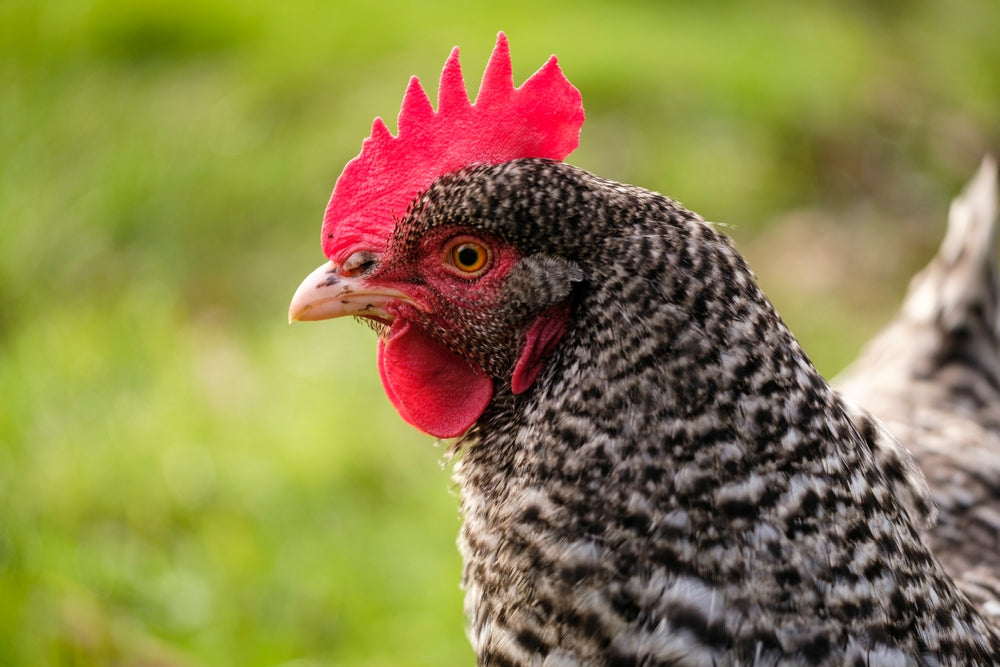
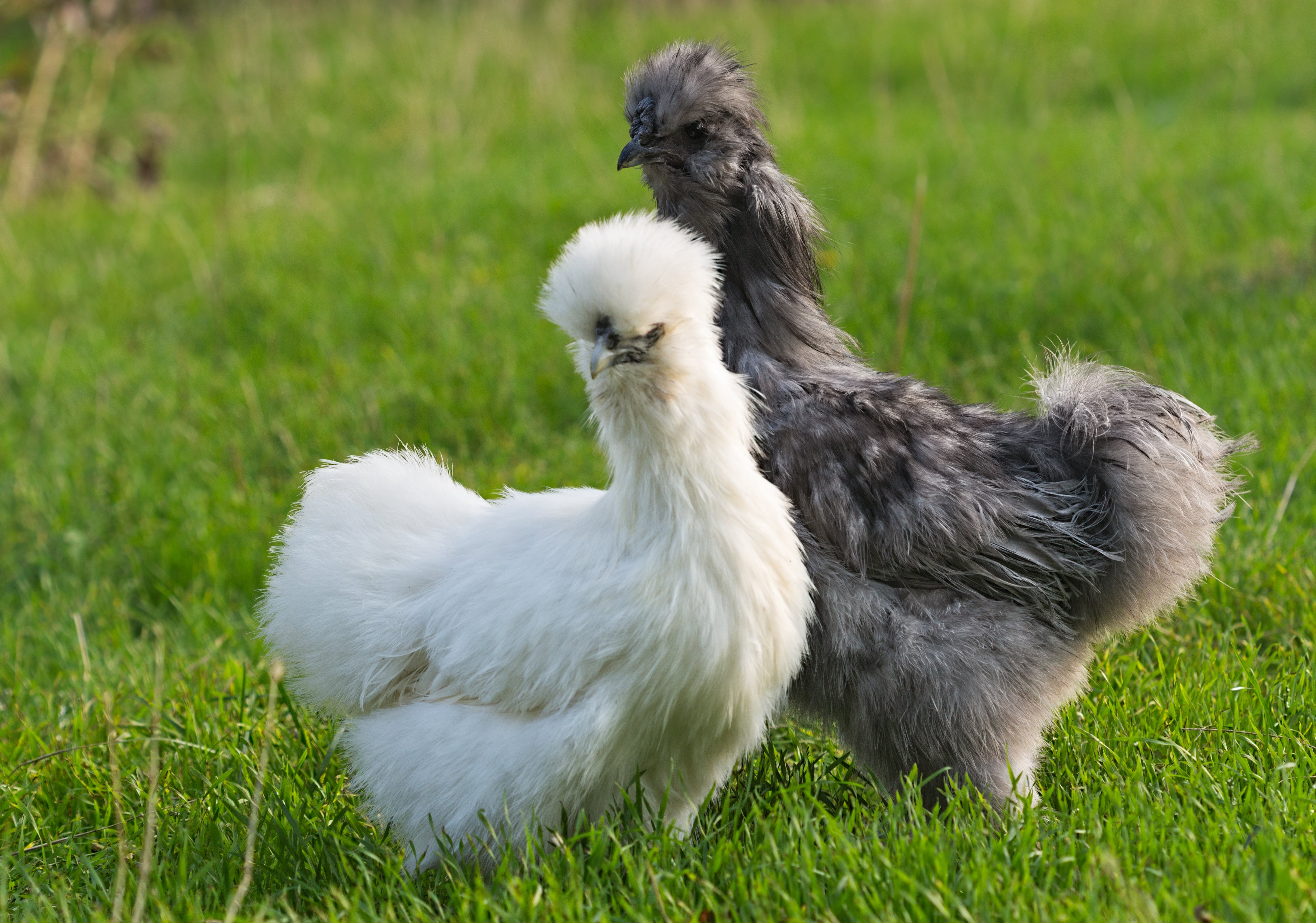
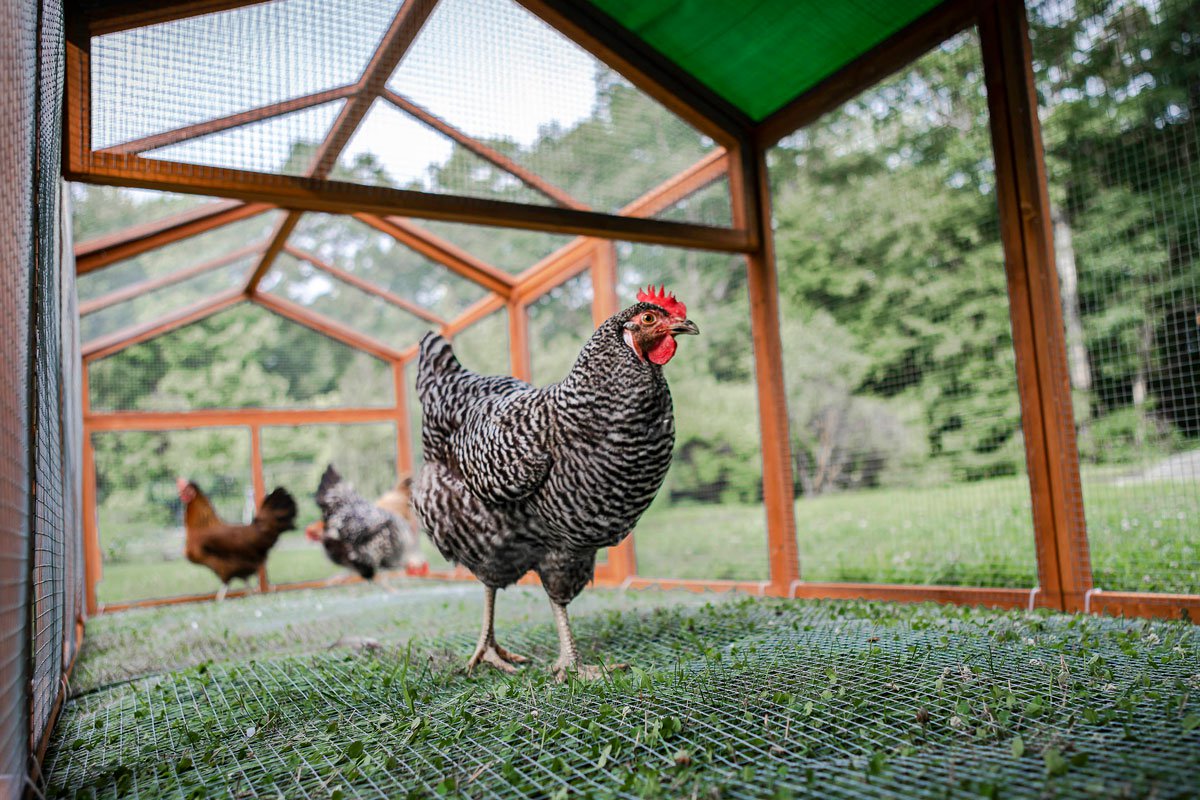
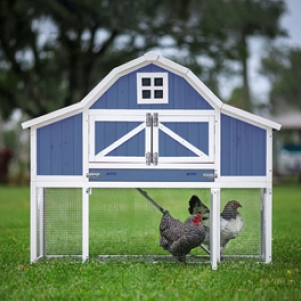
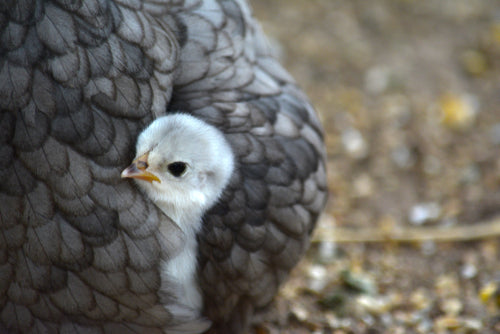
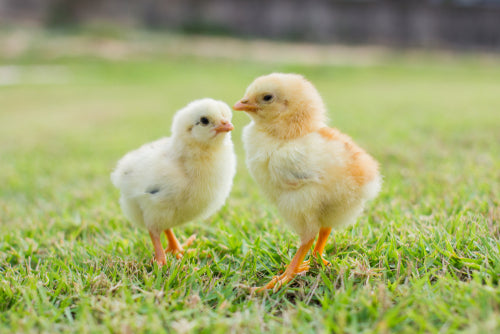
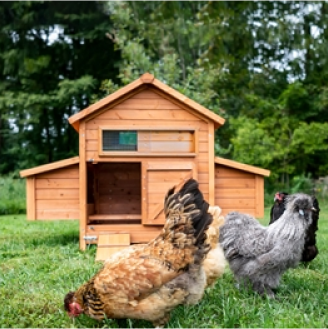

"The Clubhouse" Coop
Easy to assemble and built to last, the Clubhouse Coop is the perfect starter coop for a small flock.
Top Picks for you!
-
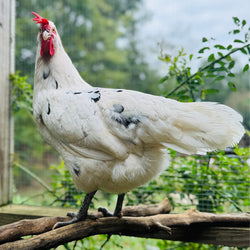 Baby Chicks: Austra WhiteRegular price From $3.50Regular priceUnit price / per
Baby Chicks: Austra WhiteRegular price From $3.50Regular priceUnit price / per -
 Baby Chicks: AnconaRegular price From $3.50Regular priceUnit price / per
Baby Chicks: AnconaRegular price From $3.50Regular priceUnit price / per -
 Baby Chicks: Ayam CemaniRegular price $84.99Regular priceUnit price / per
Baby Chicks: Ayam CemaniRegular price $84.99Regular priceUnit price / per -
 Baby Chicks: Barred Plymouth RockRegular price From $2.99Regular priceUnit price / per
Baby Chicks: Barred Plymouth RockRegular price From $2.99Regular priceUnit price / per -
 Mystery Chick from Our Best Egg Layers AssortmentRegular price $5.50Regular priceUnit price / per
Mystery Chick from Our Best Egg Layers AssortmentRegular price $5.50Regular priceUnit price / per -
 Baby Chicks: BielefelderRegular price From $9.99Regular priceUnit price / per
Baby Chicks: BielefelderRegular price From $9.99Regular priceUnit price / per -
 Baby Chicks: Frizzle Easter Egger BantamRegular price From $6.99Regular priceUnit price / per
Baby Chicks: Frizzle Easter Egger BantamRegular price From $6.99Regular priceUnit price / per -
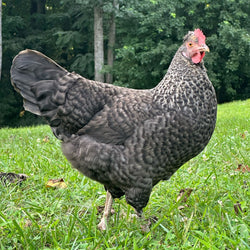 Baby Chicks: Gold Kissed Granite Olive EggerRegular price From $12.99Regular priceUnit price / per
Baby Chicks: Gold Kissed Granite Olive EggerRegular price From $12.99Regular priceUnit price / per -
 Baby Chicks: Lavender Dream Easter EggerRegular price From $12.99Regular priceUnit price / per
Baby Chicks: Lavender Dream Easter EggerRegular price From $12.99Regular priceUnit price / per -
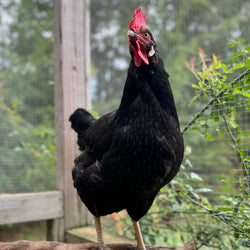 Baby Chicks: AmeribellaRegular price From $9.99Regular priceUnit price / per
Baby Chicks: AmeribellaRegular price From $9.99Regular priceUnit price / per -
 Baby Chicks: Easter EggerRegular price From $2.99Regular priceUnit price / per
Baby Chicks: Easter EggerRegular price From $2.99Regular priceUnit price / per -
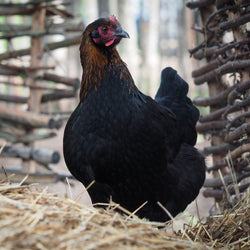 Baby Chicks: Black Copper MaransRegular price From $6.25Regular priceUnit price / per
Baby Chicks: Black Copper MaransRegular price From $6.25Regular priceUnit price / per -
 Baby Chicks: Austra WhiteRegular price From $3.50Regular priceUnit price / per
Baby Chicks: Austra WhiteRegular price From $3.50Regular priceUnit price / per -
 Baby Chicks: AnconaRegular price From $3.50Regular priceUnit price / per
Baby Chicks: AnconaRegular price From $3.50Regular priceUnit price / per -
 Baby Chicks: Ayam CemaniRegular price $84.99Regular priceUnit price / per
Baby Chicks: Ayam CemaniRegular price $84.99Regular priceUnit price / per -
 Baby Chicks: Barred Plymouth RockRegular price From $2.99Regular priceUnit price / per
Baby Chicks: Barred Plymouth RockRegular price From $2.99Regular priceUnit price / per -
 Mystery Chick from Our Best Egg Layers AssortmentRegular price $5.50Regular priceUnit price / per
Mystery Chick from Our Best Egg Layers AssortmentRegular price $5.50Regular priceUnit price / per -
 Baby Chicks: BielefelderRegular price From $9.99Regular priceUnit price / per
Baby Chicks: BielefelderRegular price From $9.99Regular priceUnit price / per -
 Baby Chicks: Frizzle Easter Egger BantamRegular price From $6.99Regular priceUnit price / per
Baby Chicks: Frizzle Easter Egger BantamRegular price From $6.99Regular priceUnit price / per -
 Baby Chicks: Gold Kissed Granite Olive EggerRegular price From $12.99Regular priceUnit price / per
Baby Chicks: Gold Kissed Granite Olive EggerRegular price From $12.99Regular priceUnit price / per -
 Baby Chicks: Lavender Dream Easter EggerRegular price From $12.99Regular priceUnit price / per
Baby Chicks: Lavender Dream Easter EggerRegular price From $12.99Regular priceUnit price / per -
 Baby Chicks: AmeribellaRegular price From $9.99Regular priceUnit price / per
Baby Chicks: AmeribellaRegular price From $9.99Regular priceUnit price / per -
 Baby Chicks: Easter EggerRegular price From $2.99Regular priceUnit price / per
Baby Chicks: Easter EggerRegular price From $2.99Regular priceUnit price / per -
 Baby Chicks: Black Copper MaransRegular price From $6.25Regular priceUnit price / per
Baby Chicks: Black Copper MaransRegular price From $6.25Regular priceUnit price / per











